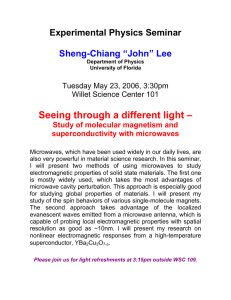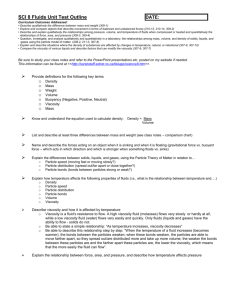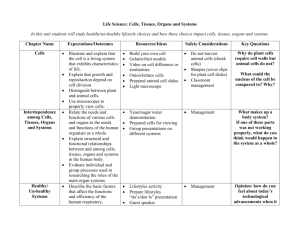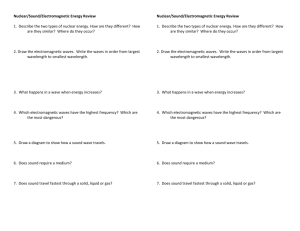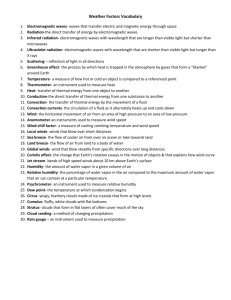Science Course Outline: Cells, Fluids, Optics, Water Systems
advertisement
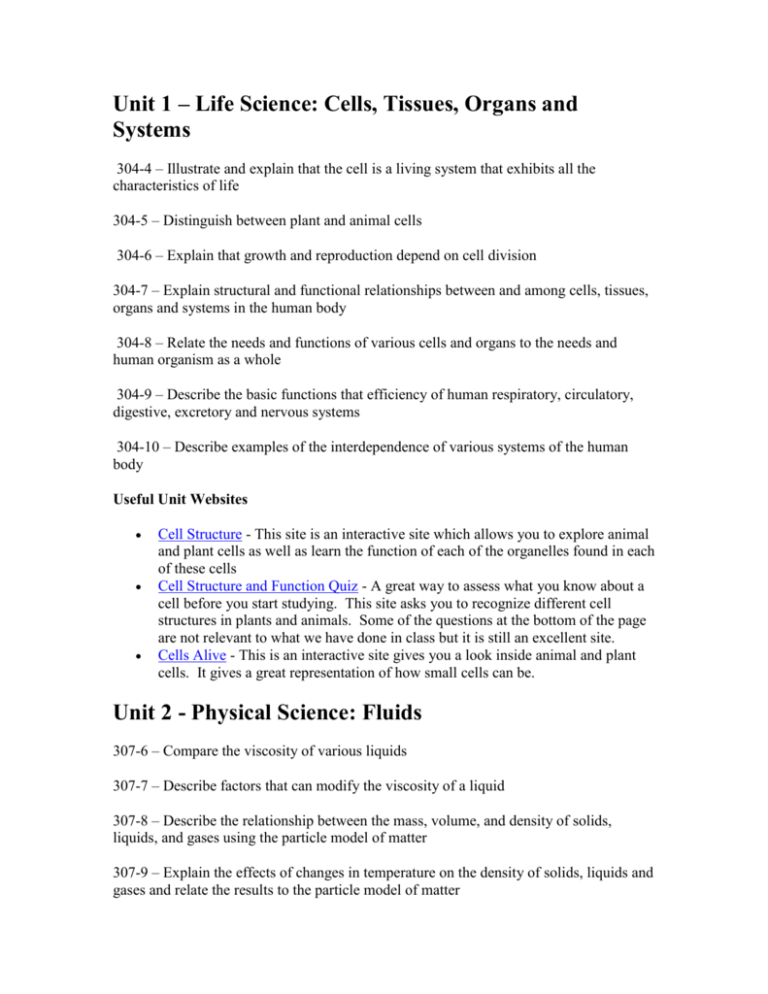
Unit 1 – Life Science: Cells, Tissues, Organs and Systems 304-4 – Illustrate and explain that the cell is a living system that exhibits all the characteristics of life 304-5 – Distinguish between plant and animal cells 304-6 – Explain that growth and reproduction depend on cell division 304-7 – Explain structural and functional relationships between and among cells, tissues, organs and systems in the human body 304-8 – Relate the needs and functions of various cells and organs to the needs and human organism as a whole 304-9 – Describe the basic functions that efficiency of human respiratory, circulatory, digestive, excretory and nervous systems 304-10 – Describe examples of the interdependence of various systems of the human body Useful Unit Websites Cell Structure - This site is an interactive site which allows you to explore animal and plant cells as well as learn the function of each of the organelles found in each of these cells Cell Structure and Function Quiz - A great way to assess what you know about a cell before you start studying. This site asks you to recognize different cell structures in plants and animals. Some of the questions at the bottom of the page are not relevant to what we have done in class but it is still an excellent site. Cells Alive - This is an interactive site gives you a look inside animal and plant cells. It gives a great representation of how small cells can be. Unit 2 - Physical Science: Fluids 307-6 – Compare the viscosity of various liquids 307-7 – Describe factors that can modify the viscosity of a liquid 307-8 – Describe the relationship between the mass, volume, and density of solids, liquids, and gases using the particle model of matter 307-9 – Explain the effects of changes in temperature on the density of solids, liquids and gases and relate the results to the particle model of matter 307-10 – Describe situations in daily life where the density of substances naturally changes or is intentionally altered 307-11 – Analyze quantitatively the density of various substances 309-1 – Describe qualitatively the relationship among force, area, and pressure 309-2 – Describe the movement of objects in terms of balanced and unbalanced forces 309-3 – Describe quantitatively the relationship among force, area and pressure 309-4 – Explain qualitatively the relationships among pressure, volume, and temperature when liquid and gaseous fluids are compressed or heated Viscosity Lab - This will help you understand viscosity. Buoyancy - This is for the Syracuse Activity. Unit 3 - Physical Science: Optics 308-8 – Identify and describe properties of visible light 308-9 – Describe the laws of reflection of visible light and their applications in everyday life 308-10 – Describe qualitatively how visible light is refracted 308-11 – Describe different types of electromagnetic radiation, including infrared, ultraviolet, X-rays, microwaves, and radio waves 308-12 – Compare properties of visible light to the properties of other types of electromagnetic radiation, including infrared, ultraviolet, X-rays, microwaves and radio waves Light and Optics Jeopardy - Play by yourself or with a friend Light and Optics Review - Review your terminology for this unit. Electromagnetic Spectrum - Play Rag's to Riches by answering questions on the electromagnetic spectrum Unit 4 - Earth and Space Science: Water Systems on Earth 311-7 – Describe processes of erosion and deposition that result from a wave action and water flow 311-8 – Analyze factors that affect productivity and species distribution in marine and fresh water environments 311-9 – Describe the interactions of the ocean currents, winds and regional climates 311-10 – Explain how waves and tides are generated and how they interact with shorelines 311-11 – Describe processes of erosion and deposition that result from wave action and water flow 311-12 – Describe factors that affect glaciers and polar icecaps, and describe their consequent effects on the environment

